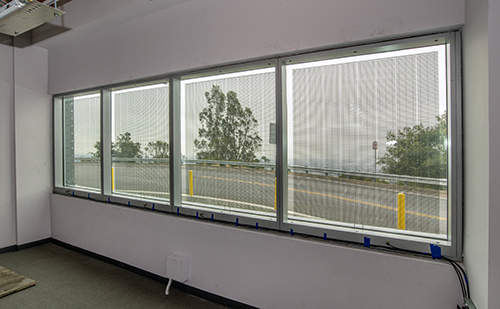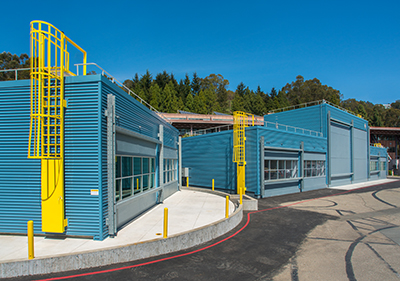Improving Window Films to Reduce Cooling Loads and Glare
Case Study Published in 2024

The Challenge: Identifying the best applications for a novel, 3D printed, window film
Innovative window films can improve control of solar radiation at windows, reducing cooling loads and improving distribution of daylight. Companies developing these films need to determine their performance under a variety of real-world conditions so they can improve their products.
The Solution: FLEXLAB®
Funded by the California Energy Commission’s CalTestBed clean energy voucher program, Lucent Optics turned to the U.S. Department of Energy’s FLEXLAB® facility at Lawrence Berkeley National Laboratory to help narrow down their window film design parameters to values more likely to achieve superior performance. They had two goals: (1) to measure the bidirectional scattering distribution function (BSDF) of a number of samples and (2) to conduct a full-scale measurement of the energy (HVAC, lighting) and comfort (visual, thermal) impacts of at least one film prototype, for two solar angle “seasons” (“high” and “low” solar angle).
The Bottom Line: Use of the films reduces solar heat gain and cooling needs.
FLEXLAB® tests demonstrated that Lucent Optics films are able to reduce heat gains and cooling needs, while also identifying which films performed better in reducing daylight glare. One prototype was unexpectedly good at solar control. Based on these results, Lucent focused subsequent prototype development on solar control rather than light redirection.The company can now use this information to fine-tune its best-performing products.

Download the full case study here: Improving Window Films to Reduce Cooling Loads and Glare
"With the Berkeley Lab’s FLEXLAB®, we are able to experiment and evaluate our prototypes of window films in an actual real world environment. "
Sergey Vasylyev, Ph.D., President & CEO, Lucent Optics, Inc.
